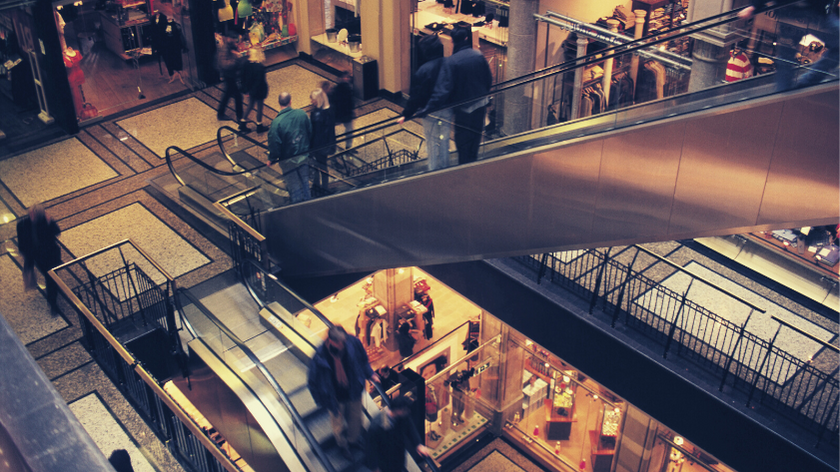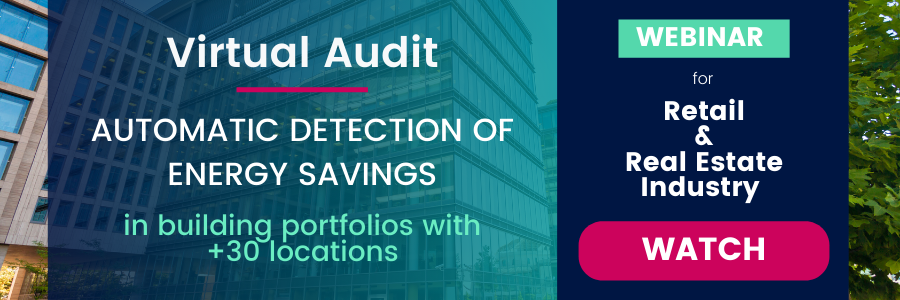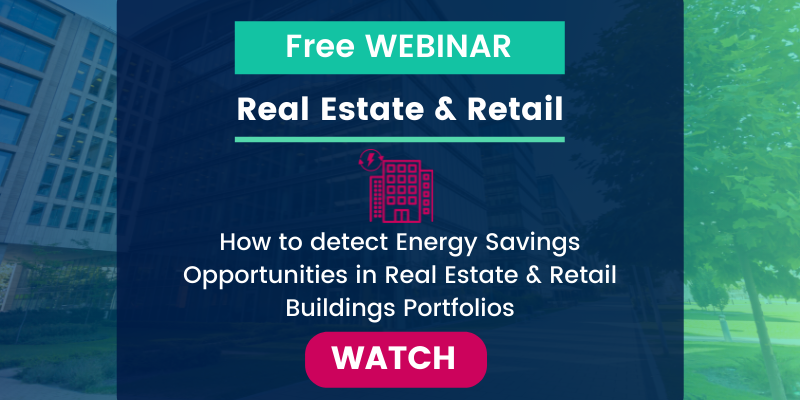The retail sector has many energy challenges, including balancing sustainability with comfort for customers and employees.
Lighting, temperature and spaces are all designed to the nearest millimetre to provide a good shopping experience, but what about energy?
In brightly lit shops or those with large spaces, controlling temperature, ventilation and lighting can be complex from an efficiency standpoint.
If you work in the retail sector, you’ve probably thought about how to optimise these areas to reduce your energy costs, and how you can use technology to help you. But how?
Tesco, one of the biggest UK retailers announced that they have reduced their energy consumption by 8% in a year and that they will continue investing in energy efficiency thanks to technology and more precisely Artificial Intelligence.
In this article, you’ll see 5 ways technology can help you control your energy consumption and save energy costs, so you can get your head around the idea and decide whether to take the plunge into the world of digital energy management.
1. Perform an Energy Consumption Analysis of your Stores
In order to reduce costs, the first thing to do is to determine how much you spend and where. Then you have to consider why or which parts of that consumption are superfluous.
You can evaluate your consumption and the situation of each individual shop manually, one by one but if you have many shops, it will be tedious. It’s true that for us, energy efficiency is a priority, but you probably have a million other things on your mind right now.
Food shops spend up to 50% of their consumption on cooling and temperature. On the other hand, shops that sell other types of products, from clothing to electronic devices, consume less in temperature but more in lighting.
Of course, these are just generic data for the sector, with which you could compare the real consumption of your establishments. Once you get a clear picture of your consumption, you will then be able to know how much you can save and where: in other words, the potential for energy savings.
Thanks to technological solutions such as an Energy Management System (EMS) you will be able to carry out this first analysis of your energy consumption and compare it quickly.
In a short period of time, depending on the size of your portfolio, you will get the results. This virtual analysis will save you time, which you can then spend evaluating the results and considering your best options.
Systems such as the DEXMA Platform, based on artificial intelligence, will help you compare your consumption with similar buildings. In addition, it will suggest recommendations for savings in your buildings or shops with the greatest potential. This way, you will be able to evaluate your situation with all the information and decide what actions to take.
You might be thinking that this will require a lot of investment in terms of money, time and infrastructure, however, this is not the case. Indeed, a cloud system does not require any hardware as it gathers the initial data from various sources (e.g. invoices, tax counters, etc.) and compares it with your database of thousands of buildings in order to establish parallels, with reliability of >90%.
2. Compare the Energy Consumption of your Locations
A single energy bill will not be of much help in understanding whether you are spending too much or too little. You will need more data. How much do your other shops consume, and what about other similar shops?
It is possible that some of your stores have a stable yet efficient consumption and won’t require energy-saving measures, while others may need more dedication. Here, technology plays a key role in facilitating this analysis, as it can directly identify where you can save the most energy.
On the one hand, the technology allows you to compare data with other buildings with similar values, thanks to the database and stored historical consumption. On the other hand, it allows you to compare your own installations with each other. If you discover that the consumption is higher in some stores than in others, you can set parameters and act first on those with the greatest savings potential.
Obviously, making these comparisons manually is possible but cumbersome. Indeed, you would have to look for sources of information to find out the consumption of similar buildings, check your bills etc. while an energy management system can do all the calculations for you, with more accuracy.
DEXMA Detect can do this review and first analysis for you, collecting data from invoices and tax counters, for instance, to perform the virtual energy analysis mentioned above.
This comparison, together with the initial analysis, is very useful for reducing risk in your energy efficiency projects, as we discussed in a recent article.
3. Measuring your Energy Consumption in Real-Time
Checking your consumption manually, no matter how often, can be rather time-consuming. It would be a pity if you discovered too late a defect in your installations, or a leaky door responsible for an increase in your air conditioning consumption.
When handling large amounts of data, technology is always helpful and has been proven to be faster and more reliable than humans in most cases. DEXMA Analyse, based on artificial intelligence, enables you to take the process a step further by monitoring and controlling your consumption regularly and around the clock. This lets you assess whether savings targets are met. To do this, you will need to install sensors and/or meters in your shops. Once you have put this process in place, it will be easy to assess whether your energy-saving measures are efficient and if you are saving as much as you expected.
4. Setting Automatic Alerts and Detecting Errors
By regularly reviewing and monitoring the energy consumption of your shops, you can identify both areas where you are achieving energy savings and areas where you are falling short of your targets.
To monitor these processes in real-time, an EMS allows the set up of automatic alerts so that errors can be corrected as soon as possible.
As an example, if one of your shops shows a peak in consumption at a certain time, you want to understand what happened: maybe it was a special day when you held an opening event and therefore the consumption was higher, or perhaps an air conditioning unit was left on by mistake, or there was a fault in the automatic on/off system.
The AI will identify this information quickly, helping you to streamline and organise your processes.
DEXMA Optimise performs this automatic analysis and anomaly detection so that you can adjust your consumption and optimise it as much as possible. Like other AI, the more data it processes, the more intelligent it becomes: indeed, this EMS learns from consumption patterns, schedules, and consumption on working days and on holidays, among other things.
Once an anomaly has been detected by the system, a person responsible for checking or repairing the problem will be automatically assigned.
As a retail professional, you might use a Computer-Aided Maintenance Management System (CMMS) in your shops. If so, you can integrate it directly within the EMS to share information and alerts, as explained in this article on CMMS and CMMS integration.
5. Share Energy Reports with your Team Automatically
For an energy efficiency project to work, you need the support of your management team and your employees and colleagues. Management commitment is essential to obtain a budget, prioritise objectives and deliver value. Involving the rest of the company will be necessary to implement changes in the short, medium and long term.
And what is the role of technology in this respect?
Through an EMS energy consumption targets and progress of your energy-saving measures will be displayed. If your employees and colleagues understand the targets and clearly see the results of their actions, it will therefore be easier for them to be an active part of the solution.
You can also automate some of your communications and create customised reports, tailored to your audience. For example, management will want to know financial data, forecasts and savings. Your colleagues may also be interested, but they will probably prefer to see progress data, comparisons between establishments, standards in similar buildings, etc. Technology will help you to be more transparent on this occasion.
Technological tools and solutions have become popular in the energy management sector and a must-have to help professionals optimise processes.
If you are thinking of implementing energy efficiency measures in your shops, we recommend reading this case study of the Superspar supermarket that saved +90,000€ in energy consumption!
And if you would like to find out more about how an EMS can help you, please contact our experts.




